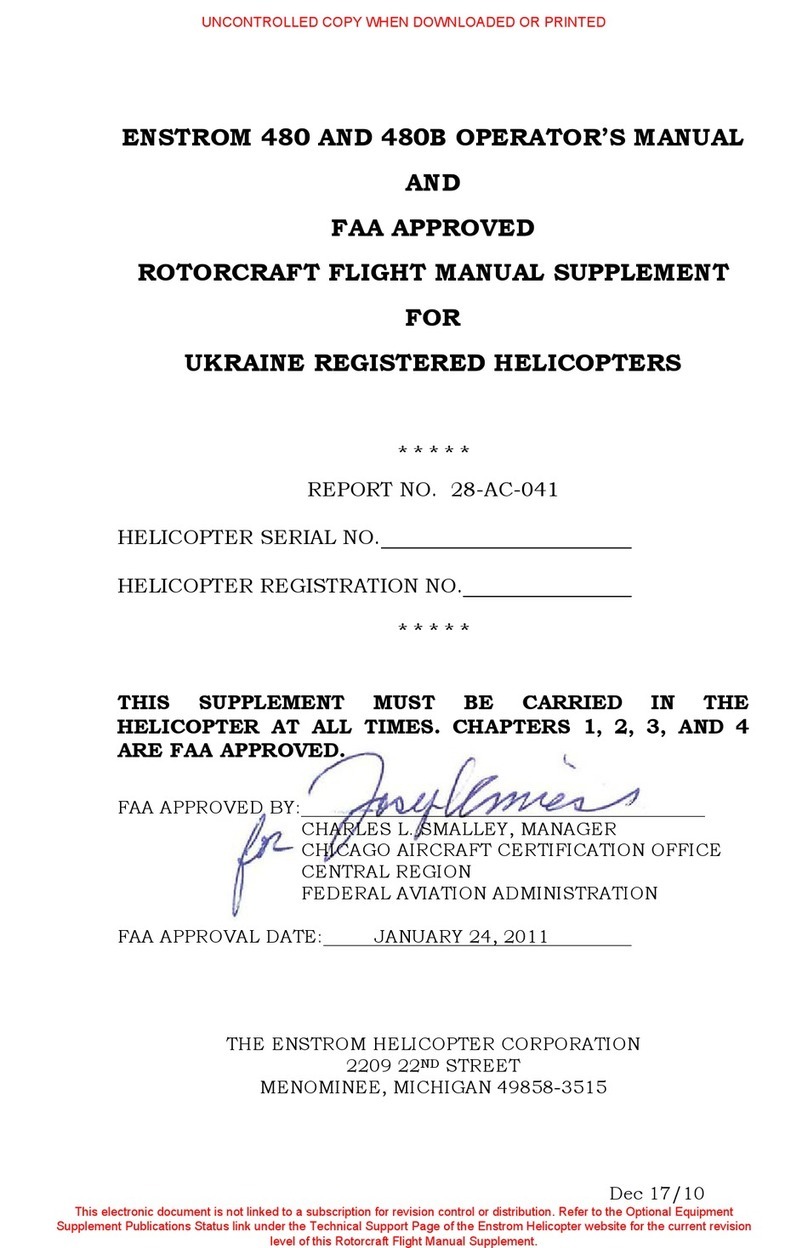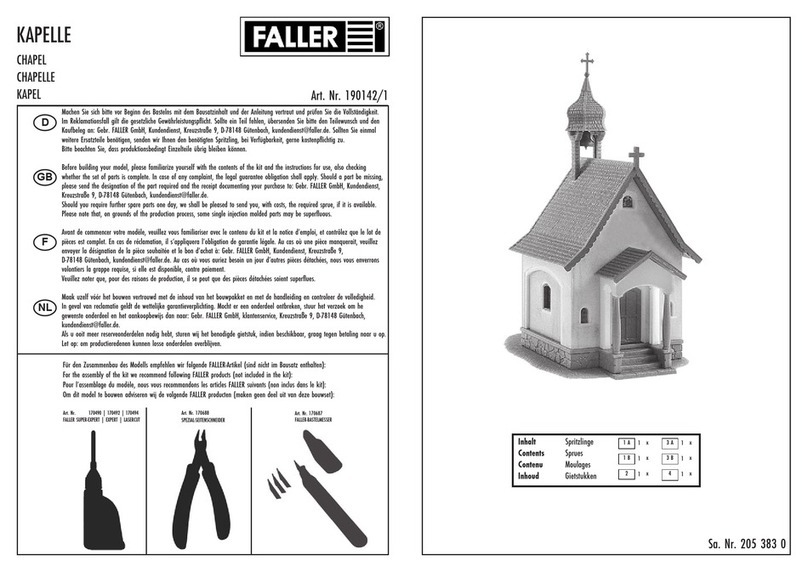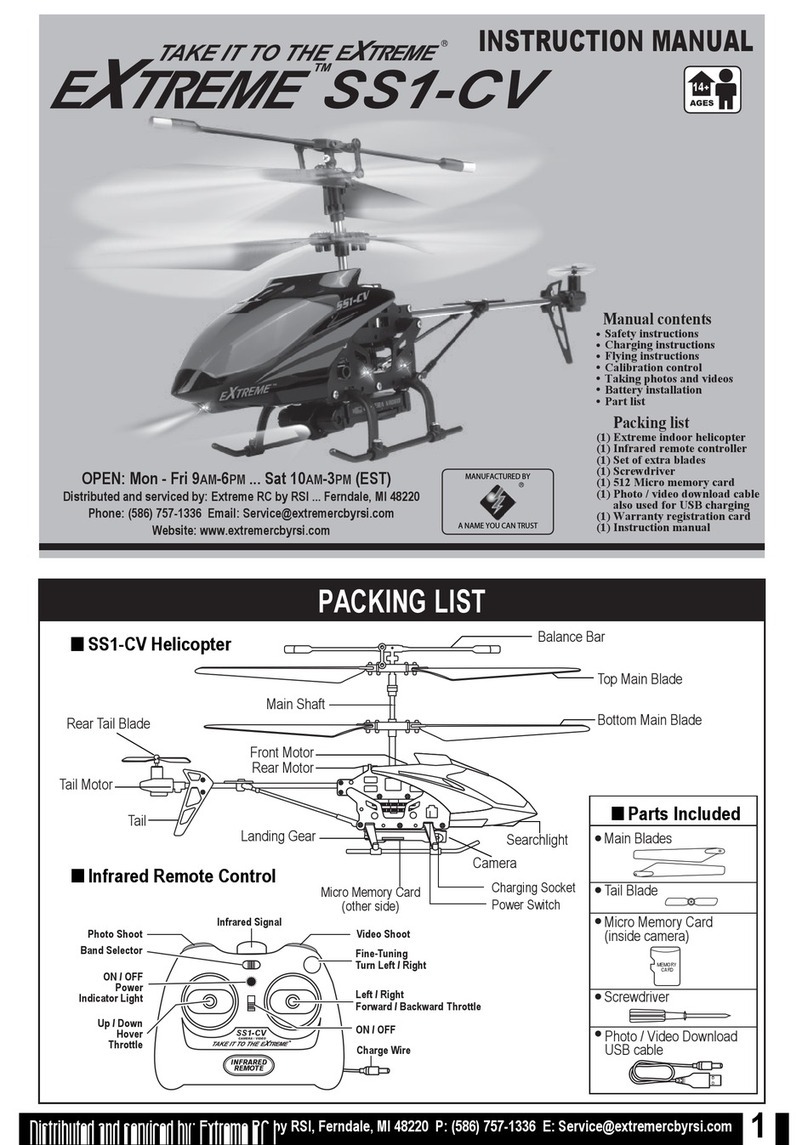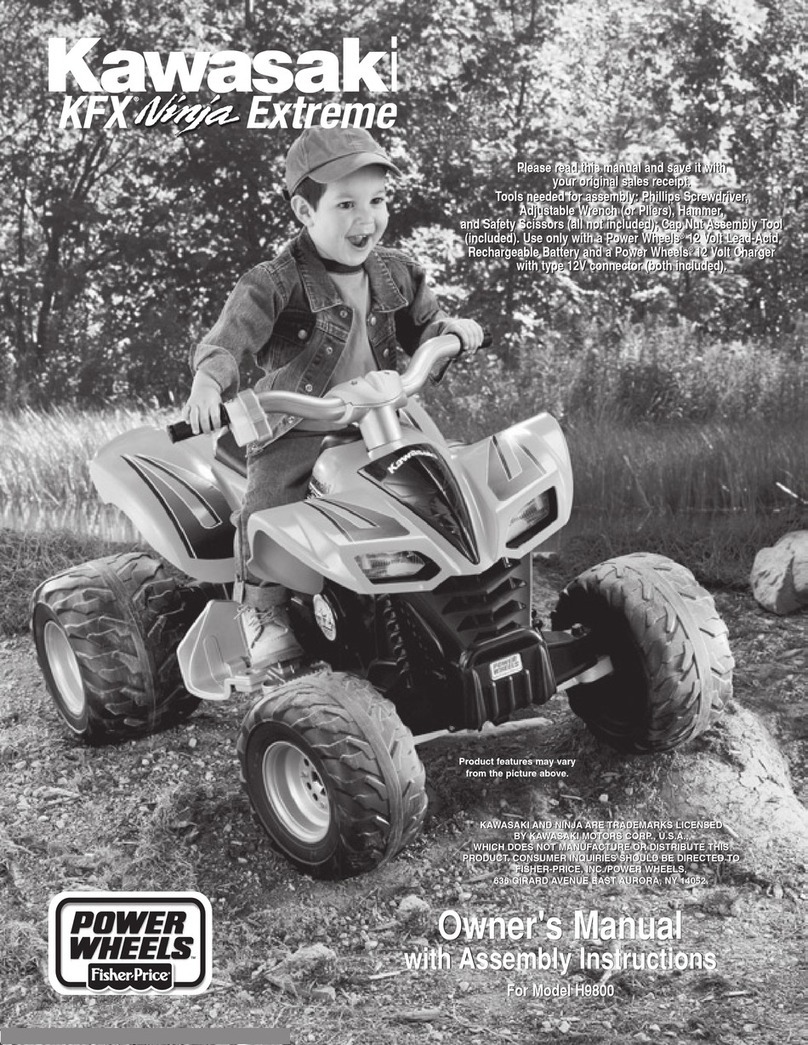PRMRP PCV 001 Instruction Manual

PRMRP
1 Lavender Drive
Southminster
Essex
CM0 7RQ
Tel – 07807225801
prmrp@fsmail.net
www.prmrp.com
PCV 001
Building Instructions
SCALE MODEL PRODUCT FOR ADULT MODELLERS ONLY.
WHITE METAL CONTAINS LEAD - WASH HANDS AFTER USE.
MAY CONTAIN SMALL PARTS. ETCHED BRASS HAS FUNCTIONAL SHARP EDGES
- HANDLE WITH EXTREME CARE

2
Thank you for purchasing this kit.
This instruction pack should provide guide for building this model given some experience
of soldering and the basics of etched kit construction. Please note that the body is only
basically shaped as the final profile can only be established whilst soldering the coach
ends in place.
Please read all the pack before starting to build.
Drawings and photos are essential for builders to acquaint themselves with the prototype
they wish to model.
For builders of modern image in 7mm, consider joining MIGO+1, the Modern Image
Gauge 0/1 organisation. For more details see the MIGO+1 website at www.migo.org
Transfers are available from Fox Transfers.

3
Suggestion of tools that maybe required and general kit assembly
Preparation
Before any parts are cut from the etched frets, push through any rivet holes from the back of the
fret. These are represented by half etched holes on the rear of the fret. The same also applies to
pre-formed loco.
Forming the Etched Parts
When forming the etches, unless otherwise instructed, the fold lines are on the inside. A pair of
bending bars are ideal for this job or a vice, (without serrated jaws), would suffice.
Soldering
The key word for a successfully soldered joint is cleanliness. If the parts to be joined together are
clean metal surfaces and are well coated in a good flux and providing the soldering iron tip has
sufficient heat, a perfect joint which is also very strong will result.
A good strong joint can be achieved with glues but it is not easy to rework. A soldered joint can be
easily undone, altered, corrected etc. by just re applying some flux and heat from the soldering
iron. The flux transfers the heat from the tip to the metal surfaces to be joined and stops
oxidization at the joint. I allow the multi-core solder to stay molten on the joint and, when the iron
is taken away, will cool to form a solid metal joint.
When undertaking any kind of soldering always hold the parts to be joined together securely and
comfortably. You will learn with experience how long to hold the iron on and in turn how much
pain your fingers can endure. The use of small clamps such as hair clips, mini G clamps, (not
rubber bands!), a small vice, various pliers etc. will make life easier. A simple jig soldered together
out of scrap metal or made from wood may also help for holding parts you find awkward to hold.
You can use the various temperature range solders to your advantage during building. Multi-core
for larger pieces will give you the main structure. A solder called Carrs 145 or 177 solder is used
to apply the finer etches and laminates. Finally white metal solder, Carrs 70 Red Label, is used to
fix the castings on.
Remember to take care not to apply too much heat near laminates or casting you have already
joined as you may disturb them.
Cleaning Up
When assembly is finished, all excess solder should be cleaned from the model. Files, small wire
brushes, fibre pens and Wet & Dry paper are all useful aids when performing this task.
On your model there are joints between etches and castings that may require some filling. Car
body fillers such as Isopon are ideal, (avoid flexible/elastic fillers). When any solder or filler has
been cleaned up the body should be washed in warm soapy water to remove any grease or flux
that would prevent paint from adhering. Some washing up liquids leave a film on models, so it is
recommended that Cillit Bang is used as a second wash. This removes all films, grease etc.
Plastic window boxes sold in the big DIY stores make an ideal size container for washing your
models.
Rinse the model in clean water and leave to dry naturally over night.

4
Keeping the body square
Always build on a level surface. The last you thing you want is for your model to derail or wobble.
Use a piece of 7mm Glass the squarest material you can get. This will ensure that you stand every
chance of building a square model.
Tools
•A soldering iron with range of bits from large to very fine, for example a Weller temperature
controlled iron (60 watt)
•Multi core solder, Carrs “Green Label” flux aids the running of the solder#18-24”
•Steel rule
•Folding bars such as those sold by M&M Models
•Range of Swiss files
•Medium cut bench knife such as Stanley Knife or short bladed scissors for cutting out
etches.
•Evo Stick/Super Glue and Epoxy
•Good quality side cutters
•Fine pliers and duck billed pliers
•Mini drill and a good range of drills
Parts List Per Coach
Body Etches
1. Pre-rolled body
2. Cab End
3. Cab Bulk Head
4. 3 x Inside formers
5. Body End
6. 4 x Roller Shutters
7. Roof Radio Pod Mounting
8. 2 x Battery Box
9. 2 Xbattery Box Fronts

5
10.Underframe Box
11.Underframe Box Front
12.Corridor Connector
13.4 x Roller Shutter Checkerplate
14.2 x Rain Strips
15.2 x Rubbing Plates
16. Cab Door Grab Rails
17. Cab Front Steps
18.Control Desk
19.Driver Communication Box
20.Lamp Brackets
21.4 x TDM Jumper Cable End 1 (A cast version is also supplied)
22. Light Cluster Etch
23. Not Used
24. Not Used
25. Redundant Vac Pipe brackets
26.Cab Seats
27.Roller Shutter Door Handles
28.4 x TDM Jumper Cable End 2 (A cast version is also supplied)
29.Second Control Desk
30.Hand brake Wheel
31.Wind Screen Wiper Brackets
Chassis Etch
A. Main Floor Including Bufferbeams
and Solebars.
B. Spare Bufferbeam
C. Inner Frames x 2
D. Truss Rods x 2
E. Cross Trusses x 5
F. Overlays for Cross Trusses
G. Bufferbeam Mounted Steps
H. Bogie Mounting Plates X 2
I. N/A
J. N/A
K. N/A
L.
V Hangers x 2
Bogie Etches
1. Bogie Stretcher

6
Castings

7
1. 4 x Bogie Stabiliser Bar
2. 4 x Bogie Sides
3. 4 x Bogie End Stretchers (2 of each type)
4. 4 x Bogie Spring Unit
5. 4 x Brake Yoke
6. Roff Mounted Radio Pod
7. 4 x TDM Jumper Cables
8. 2 x WIPAC Light units
9. 2 x ETH Jumpers
10.2 x ETH Jumpers
11.2 x ETH Jumpers
12.16 x Brake blocks (8 of each hand)
13.Air Distribution Valve
14.2 x Guard Irons
15.Large Air Tank
16.Buffer Shank
17.Buffer Head
18.Roof Vents
19.2 x Coupling Bar
20.2 x Drop Buckeye
21.Air Distribution Cylinders
22.Medium Air Tank
23.Speedo Cap Bogie mounting
24.Speedo Cable body mounting
25.Cab Hand Brake mount.
Misc.
10 x 6BA Nut And Bolts. 6 x Body Side Securing and 2 x Bogie Securing
Hand Rail Wire (Cab side door handles, front Hand rails and front Jumper cable wires if
cast units not used)
Rubber Hose for Speedo Cable
Bodies
1. Solder the 8 body retaining nuts in position; the outer ones maybe easier after the
ends have been fitted.
2. Push out rivets on driving end
3. Solder driving end in position using the “nick” at the top and 2 small ears to help
with location with the main body. I tack soldered the top then work down each side.
4. Fold up driver’s desk and cab front panel and fit into place together with the second
man’s door release. Also fold and fit the two cab seats. It is easier to fit now but will
make painting them harder or you can fit them after painting the choice is yours.
5. Fit the rest of the partitions starting with “A” cab bulkhead working your way
backwards though the coach finishing with the inner end using the ½ etched lines
on the inside of the roof, folded in lower sides and the “nick” on the top of each
partition to help with location.
6. Fit the four roller shutter doors, not that the sides bend outwards to recess the door.
add the handles.

8
7. Fit the rain strips
8. Fit Radio pod base to top of roof and add the Pod itself.
9. Fit the roof shell vents in the holes provided.
10.Fit the two WIPAC light bases over the holes on the cab front. Finish these off by
adding the WIPAC lights.
11.Fit the two cab front steps under the WIPAC lights
12.Fit the Two redundant Vac Pipe Brackets
13.Fit the TDM Jumpers 1 & 2, usind a single strand wire (not supplied) to finish. I
have used a staple to simulate this)
14.Fit all of the Handrails using the handrail wire provided. Also fit two bits of wire in
the two holes under the central handrail on the front if the cab. These simulate the
redundant Vac Pipe fitting pipes.
15.Make and fit the body side grab rails.
16.Fit the Cast TDM cable to the non divining end also fit the ETH equipment box.
17.Fit the four lamp brackets two to the front and two to the rear.
Underframes
1. Fold up the main floor unit to form solebars and bufferbeams,
2. Fold up the inner frames then place on the floor (do not solder) fit cross trusses
place using the ½ etched lines on the inside of the solebars, (the 2 small ones
go at the outer ends) once in place the inner frames can be soldered into
position.
3. Fold up the trussrods and fit to the cross trusses and inner frames using the
slots in the tops of the cross trusses.
4. Fit the overlays to the cross trusses to make them into “T” section.
5. Fit the bogie mounting plates in position
6. On the inner end work out how you a going to couple the coaches together, I
used Kaydee Buckeyes (prototypical) to do this cut a section out of the
bufferbeam to fit the Kaydee and fit couplings as close as you can,
remembering that these units do not have buffers between the coaches.
7. If you want to couple more than one unit together you may want to fit a Kaydee
coupling to the outer end as well, if not fit the cosmetic cast coupling later.

9
8. Fold and fit the rubbing plates using 2mm rod, on the inner ends fit as far out
over the Kaydee as possible checking for clearance on corners, at the driving
ends the rubbing plate should be roughly in line with the bufferheads.
9. Fit the underframe to body and fit the checker plate steps, check pictures of the
coach you are modeling. Using two off cuts of brass fabricate two identical steps
to go under the drivers windows and doors.
10.Push out rivets, fold and fit the steps that hang from the bufferbeams, these go
1 each side at the driving ends and on the inner ends below the end steps.
11.Fold up the battery boxes, I suggest once folded all inner seems are fillet
soldered due to the weakness in the metal at these folds’
12. When fitting the battery boxes, fuel tanks and underframe tank use the pictures
for positioning.
13. Fit the castings as shown in the picture later on.
14.
Fit the buffers
Bogies
1. Fold up the bogie Stretcher etch
2. Fit the brake shoes in the holes on the reverse of the bogie sides. Remember these
are handed.
3. Fit the Spring unit and add the stabaliser bar
4. Drill out the bogie sides and add top hat bearing(not supplied)
5. Secure the stretcher bar, whilst adding the wheels and brake yokes. As show later
6. Fit the bogie ends. I type on each bogie.
7. Fit the bogie to the underframe, not that the deeper bogie end goes inwards.
8.
Add the speedo unit to the left side of the front bogie and the underframe as show.


11
Popular Toy manuals by other brands
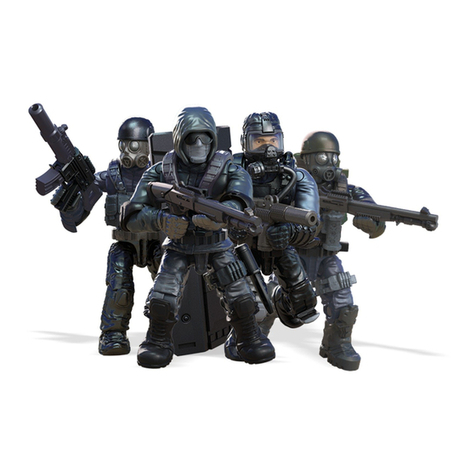
Mega Construx
Mega Construx Call of Duty Urban Strike Squad manual
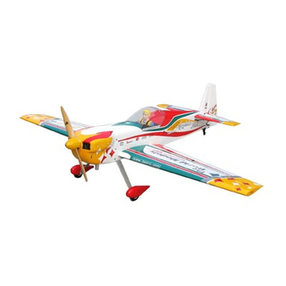
The World Models Manufacturing
The World Models Manufacturing 29% CAP 232 instruction manual
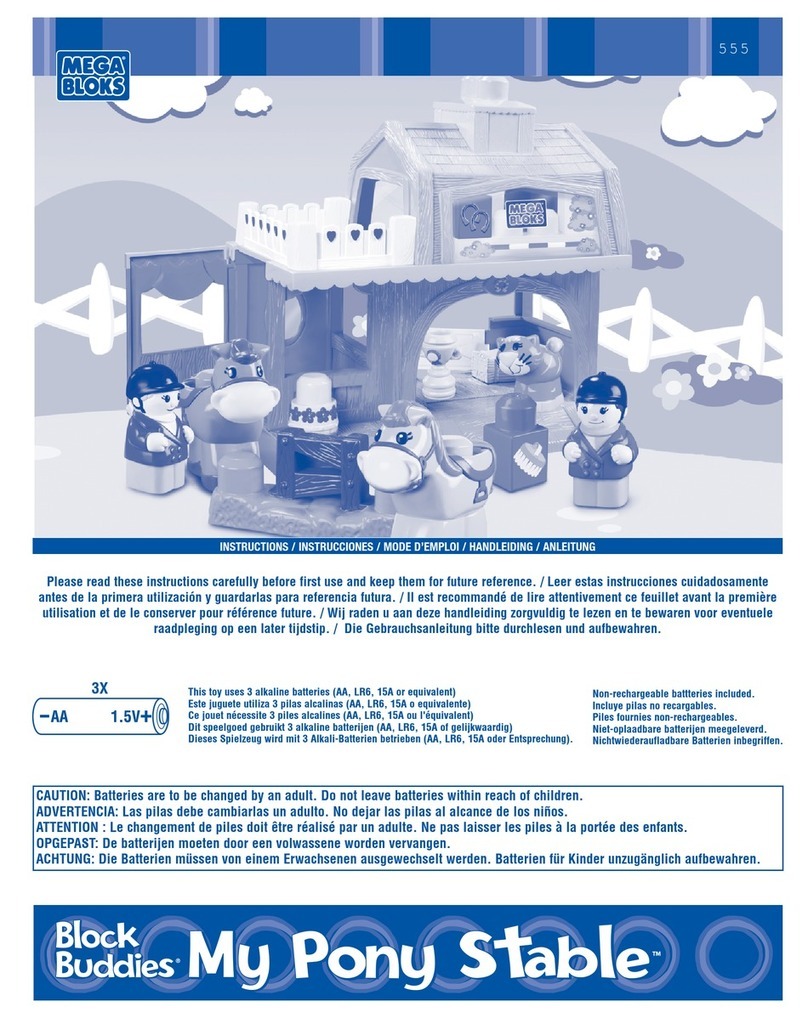
Mega Bloks
Mega Bloks Block Buddies My Pony Stable instructions
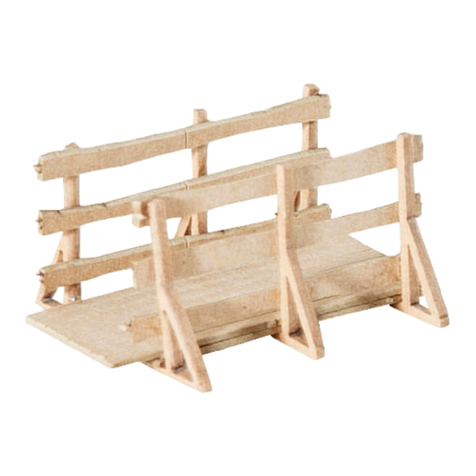
NOCH
NOCH LASER CUT minis 14247 quick start guide
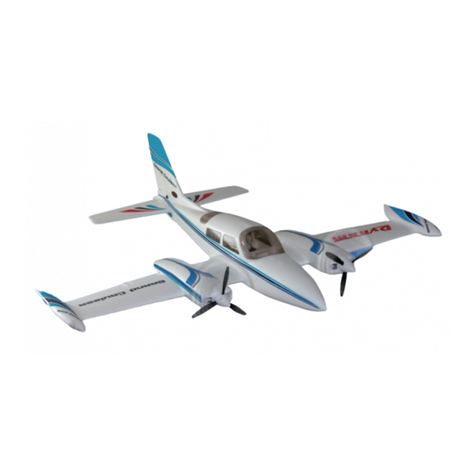
Dynam
Dynam GRAND CRUISER instruction manual

Himoto
Himoto hummer E18HM instruction manual

HELLER
HELLER GMC CCKW 353 Assembly instructions
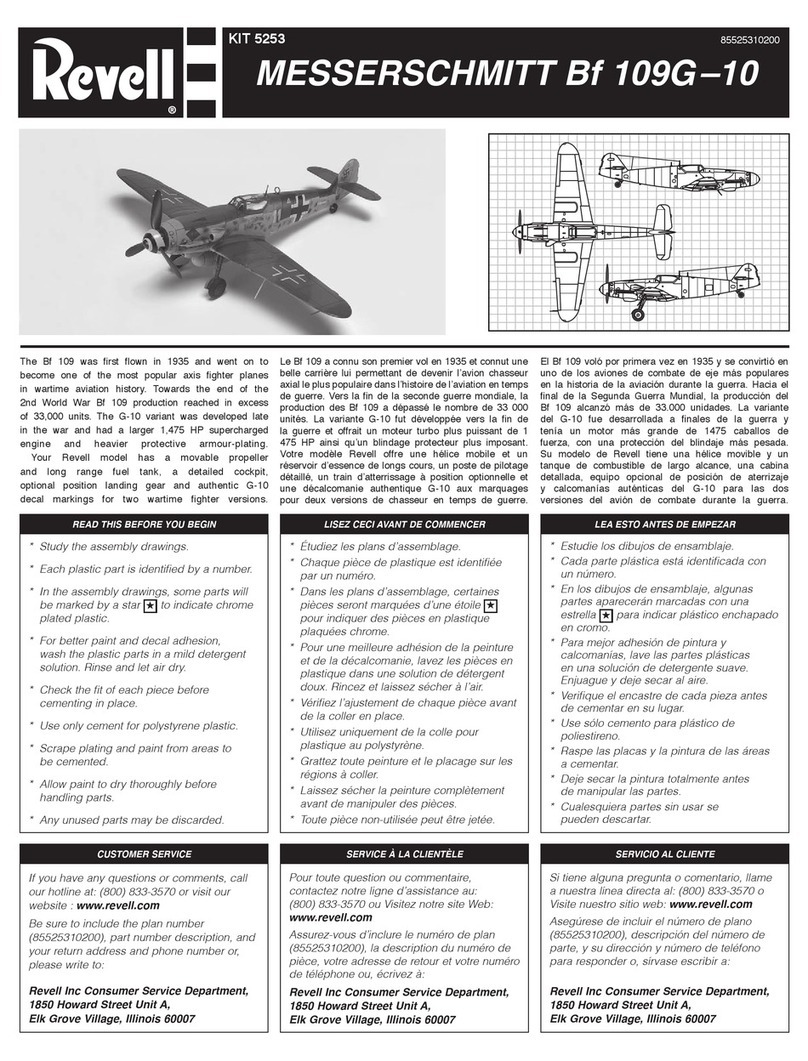
REVELL
REVELL MESSERSCHMITT Bf 109G-10 manual

GREAT PLANES
GREAT PLANES EXTRA 330SC instruction manual
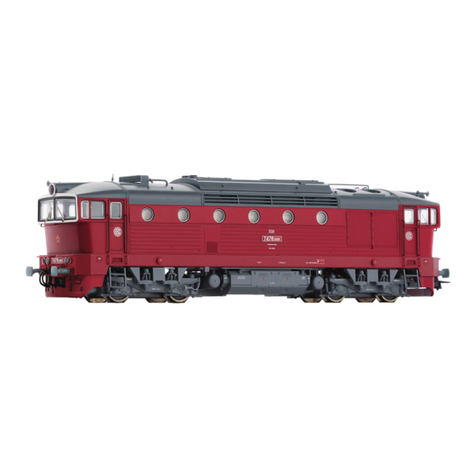
roco
roco Diesellocomotive T 478 CSD operating manual

Eduard
Eduard SM-79-II Sparviero Interior Assembly instructions
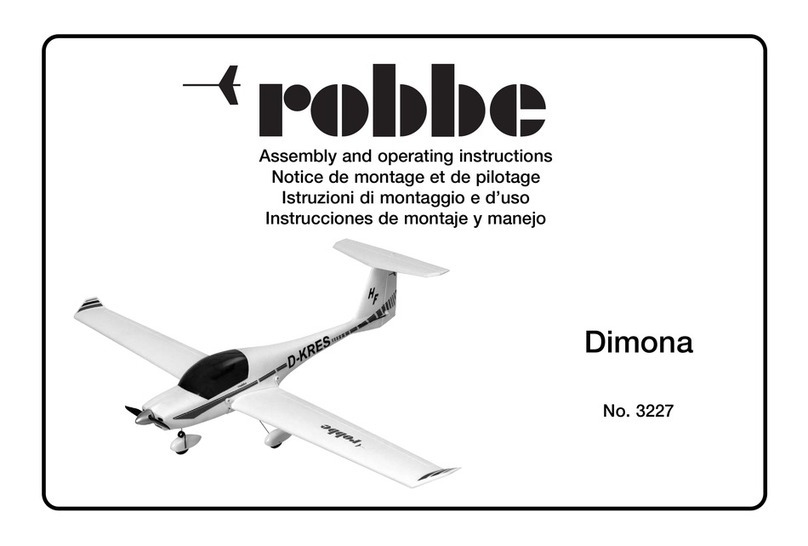
ROBBE
ROBBE Dimona Assembly and operating instructions
